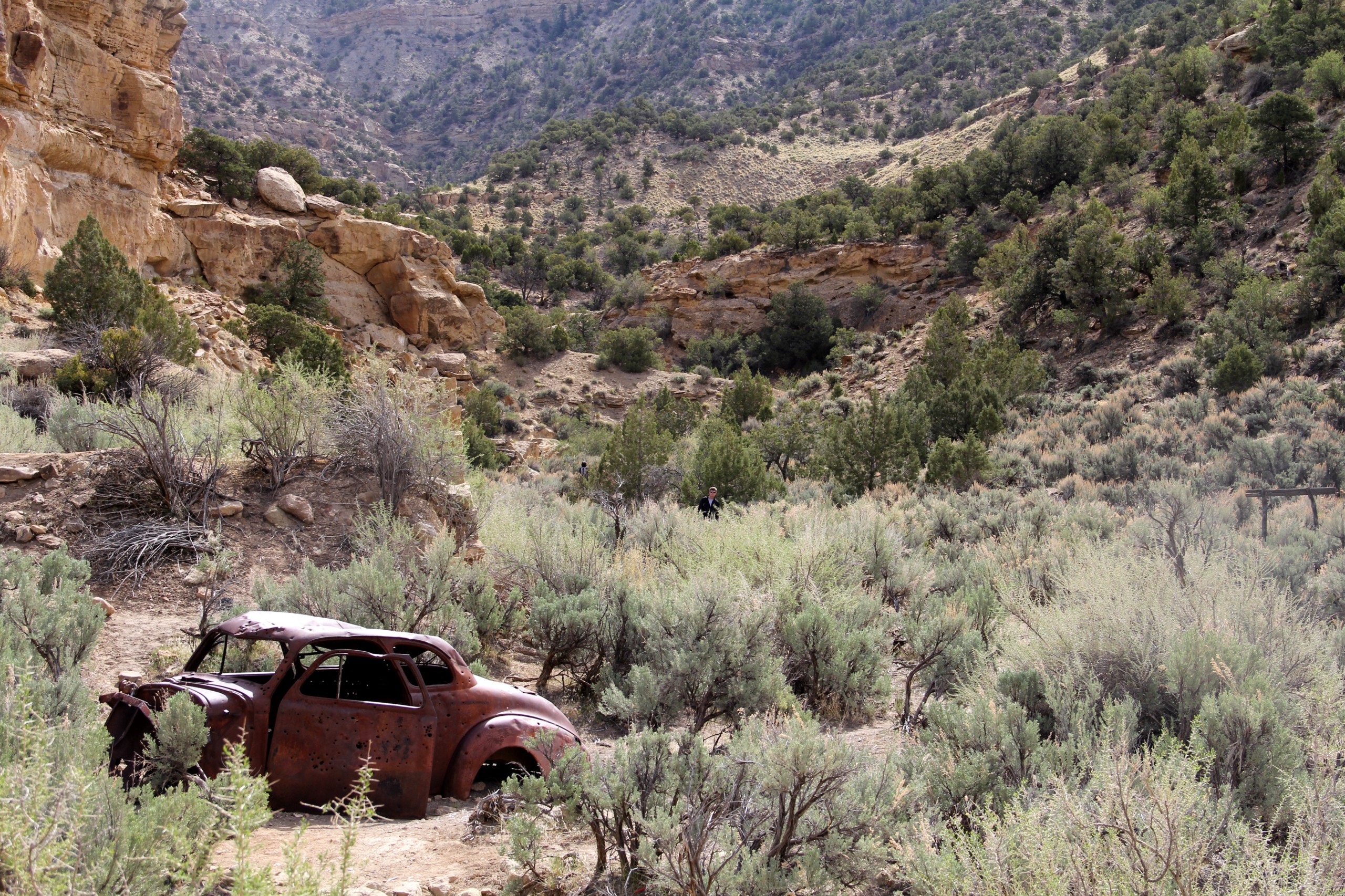Ghosts of the Desert, by Ryan Ireland

As someone who lived in Utah for many years, I was interested to read Ryan Ireland’s post-apocalyptic sounding Ghosts of the Desert. It’s set (mostly) in the western Utah desert and ghost towns. It was an interesting follow up to another Utah-based novel I recently read, The Never Open Desert Diner, by James Anderson, which is set more to the east in Utah, but also very
remote.
First things first: this book won’t be for everyone. It is a violent, strange, perverse literary near-horror novel, with a fair bit of philosophizing mixed in. Comparisons to Cormac McCarthy aren’t entirely wrong; if you mix in a little Stephen King you won’t be far off.
But as I read the opening chapter, what really came to mind for me was Jim Harrison’s classic western novella, Revenge. Like Revenge, Ghosts of the Desert opens with a poor soul being physically dismantled by an implacable enemy. Ireland’s prose has kinetic, muscular feel to it.
He lost his footing and toppled to the ground. His shoulder glanced off a rock. His leg twisted. His ankle throbbed from where he sprained it on a low-laying gravemarker. As he skidded to the flat bottom arroyo his ear grated on the hardpacked soil. The force of the final impact thumped the air from his lungs, leaving his jaw yawping at nothing, his neck straining upward and
his teeth opening and shutting, biting at the sky above him. Dust blinded him and he blinked rapidly. Yet, the wound under his arm occupied his mind — it burned as if the wire still dragged long and slow through the skin.
Norman heads out to Utah on a research grant to study ghost towns. He left behind Grace, a wild child semi-archaeologist in Indiana. In what state he left her, we’re not exactly sure. Is he still sleeping with her? Has she run off with someone? Is she still alive? We’re not sure. On his way from Indiana, Norman stops at a truck stop and we’re treated to a wonderful rendition of truck stop culture and the paranoia of every easterner who’s ever wandered into a small joint and drew the unwelcome attention of everyone in the room.
While he’s exploring the desert, he encounters Jacoby, the post-apocalyptic leader of a group of lost souls living in the desert, very much as people might have lived in the 1800s. Jacob is a philosophizer, interested in stripping away the thin veneer of civilization we all carry around with us. He’s also a seller of bodies, a killer of men, an amoral survival of the fittest cult leader. What follows feels very much like Heart of Darkness meets Mad Max. Norman has a variety of experiences, most of them unpleasant, and a variety of philosophical conversations, most of them unsatisfactory for Norman. Events spiral out of control and we learn a great deal about Norman and what he’s willing to do to stay alive.
Ghost of the Desert is an odd novel. Near revolting in places, it’s not entirely clear what Ireland was aiming for. But it’s gripping; it’s scenic, and it’s philosophical. The right reader will absolutely get a kick out of it.
And it’s no spoiler to say that Gollum, or something very much like him, makes an appearance.
(I received a free advance reader copy from Edelweiss in exchange for a review)

